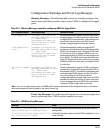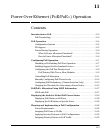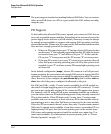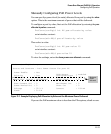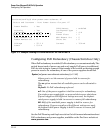
Power Over Ethernet (PoE/PoE+) Operation
PoE Operation
For PoE+, there must be 33 watts available for the module to begin supplying
power to a port with a PD connected. A slot in a zl chassis can provide a
maximum of 370 watts of PoE/PoE+ power to a module.
Disconnecting a PD from a PoE port causes the module to stop providing PoE
power to that port and makes the power available to any other PoE ports that
have PDs connected and waiting for power. If the PD demand for power
becomes greater than the PoE power available, then power is transferred from
the lower-priority ports to the higher-priority ports. (Ports not currently
providing power to PDs are not affected.)
Power Priority Operation
When Is Power Allocation Prioritized?
If a PSE can provide power for all connected PD demand, it does not use its
power priority settings to allocate power. However, if the PD power demand
oversubscribes the available power, then the power allocation is prioritized
to the ports that present a PD power demand. This causes the loss of power
from one or more lower-priority ports to meet the power demand on other,
higher-priority ports. This operation occurs regardless of the order in which
PDs connect to the module’s PoE-enabled ports.
How Is Power Allocation Prioritized?
There are two ways that PoE power is prioritized:
■ Using a priority class method, a power priority of Low (the default),
High, or Critical is assigned to each enabled PoE port.
■ Using a port-number priority method, a lower-numbered port has
priority over a higher-numbered port within the same configured
priority class, for example, port A1 has priority over port A5 if both
are configured with High priority.
11-7



